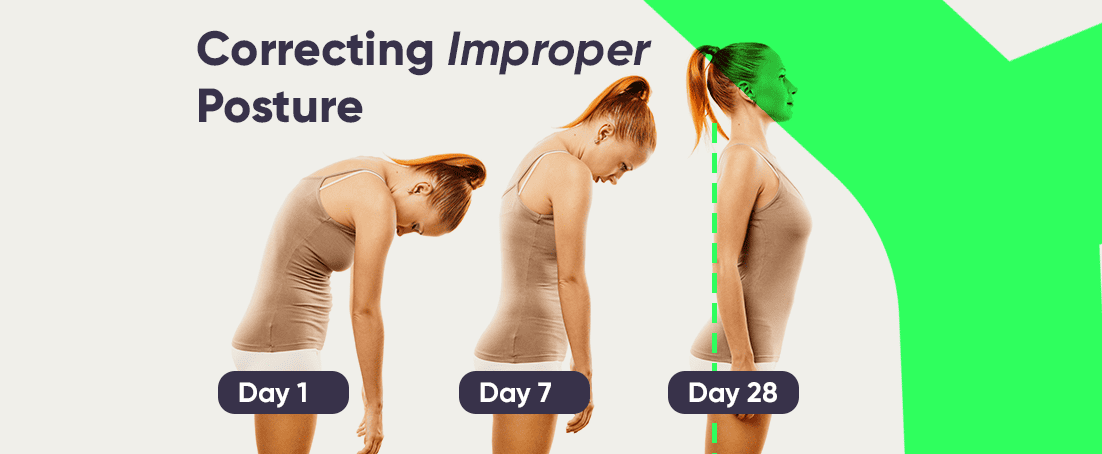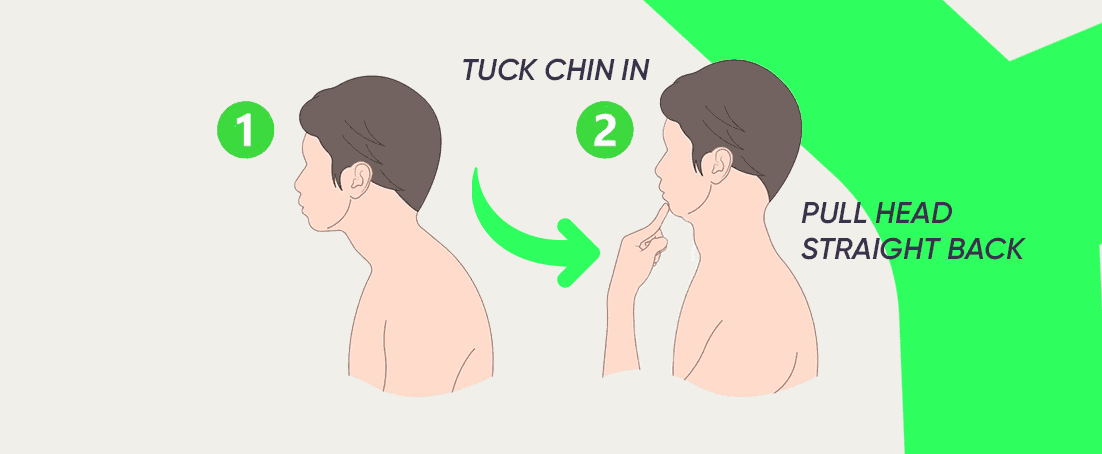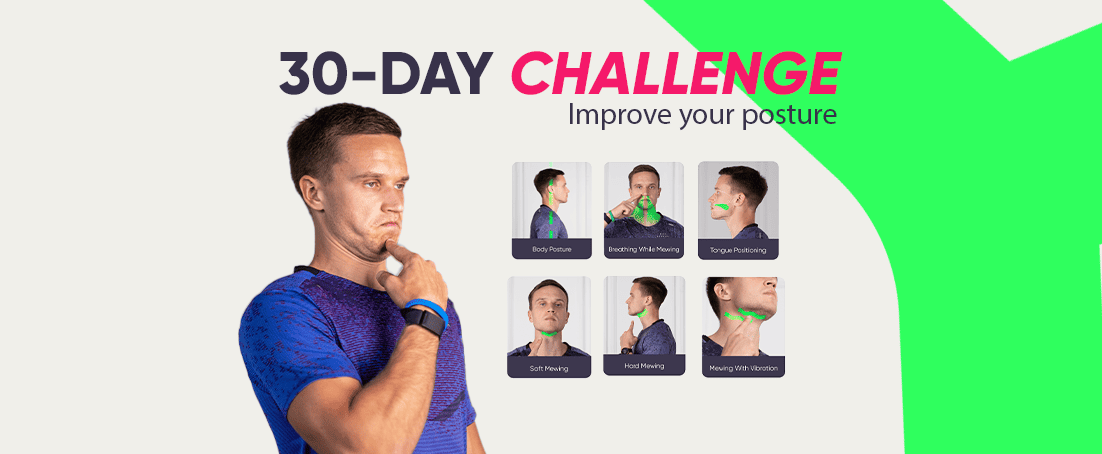Complete Guide to Chin Tuck Face Exercises
Transform Your Jawline, Improve Your Posture & Reduce Double Chin
What Are Chin Tuck Face Exercises?
Chin tucking is a simple yet powerful exercise that involves moving your chin forward and backward. This technique targets the muscles in your neck, jaw, and face to improve posture, reduce double chin, and alleviate neck pain.
Originally developed by New Zealand physical therapist Robin McKenzie as the McKenzie chin tuck technique, this exercise was designed to treat neck and back pain. Today, it’s widely used not just for posture correction but also as an effective facial exercise for jawline definition and double chin reduction.
Key Benefits at a Glance
- Improves poor posture, especially forward head posture
- Reduces neck discomfort and pain
- Helps define and reshape facial muscles and jawline
- Assists in reducing the appearance of double chin
- Strengthens deep cervical flexor muscles
Quick demonstration of proper chin tuck technique from physical therapists Bob & Brad
The Science Behind Chin Tucks
Scientific Evidence
Multiple studies have confirmed the effectiveness of chin tuck exercises. The Journal of Physical Therapy Science has documented how chin tucks activate and strengthen the deep cervical flexor muscles, which are essential for proper head and neck alignment.
How Chin Tucks Work
Chin tucks engage the deep neck flexor muscles, crucial for interconnecting the cervical spine, shoulder blades, and head. These muscles are often weakened by modern lifestyles that involve looking down at phones and computers for extended periods.
When performed correctly, chin tucks:
- Activate the suboccipital muscles at the back of the head
- Strengthen the deep cervical flexors in the front of the neck
- Stretch the fascia (connective tissue) under the chin
- Improve alignment of the cervical spine
This comprehensive muscular engagement creates both immediate relief and long-term postural improvement.
The Forward Head Posture Connection

Forward Head Posture (FHP) occurs when your head extends forward beyond your shoulders. This misalignment places extra strain on your neck muscles and can lead to:
- Chronic neck and shoulder pain
- Tension headaches
- Jaw problems
- Increased appearance of double chin
- Premature neck aging
Did You Know?
For every inch your head moves forward in posture, it adds approximately 10 pounds of pressure on your spine and supporting muscles. This explains why poor posture can lead to significant pain and facial appearance changes over time.
How to Perform Chin Tuck Exercises Correctly

Basic Chin Tuck Technique
Starting Position
Stand or sit as upright as possible. Look forward, positioning your head straight with your ears directly above your shoulders. Maintain good overall posture throughout the exercise.
Position Your Hand
Place your finger lightly on your chin without applying pressure. This will serve as a reference point and help you monitor the movement.
Perform the Tuck
Gently pull your chin and head straight back, creating a “double chin” effect. During this movement, you should feel a gentle stretch at the base of your head where it connects with your neck. Ensure your finger is no longer touching your chin.
Hold the Position
Maintain this tucked position for 5-10 seconds. Focus on the sensation of the muscles working at the front of your neck.
Return to Starting Position
Slowly move back to the starting position where your chin and finger touch, using controlled movements.
Repeat
Perform 10 repetitions, completing 3 sets daily for optimal results. As you build strength, gradually increase to holding for 15-20 seconds.
Important Form Tips
- Move your head straight back horizontally, not up or down
- Keep your jaw relaxed, not clenched
- Maintain the natural curve in your neck
- Don’t force the movement or overextend
- Breathe normally throughout the exercise
Advanced Chin Tuck Variations
Wall Chin Tuck
Stand with your back against a wall, making sure your shoulders and buttocks touch the wall. Perform the chin tuck while maintaining contact with the wall for proper alignment.
Difficulty: Beginner
Lying Chin Tuck
Lie on your back with your head extended slightly off the edge of your bed. Perform chin tucks in this position to activate the deeper neck flexor muscles.
Difficulty: Intermediate
Chin Tuck with Resistance
Place a towel under your chin and create gentle resistance by holding the ends with your hands as you perform the tuck movement.
Difficulty: Advanced
Dr. Eric Berg’s in-depth guide to chin tuck exercises for double chin reduction
Before and After Results
What Results Can You Expect?
Consistent practice of chin tuck exercises can yield noticeable improvements in both posture and facial appearance. Results vary based on individual factors like age, consistency, and initial condition, but most people begin seeing changes within 4-8 weeks of regular practice.
Before

After Regular Face Exercises
Results after consistent face exercises including chin tucks
Posture Improvement

30-Day Challenge Results
Many practitioners report significant improvements in head posture and reduced neck pain after completing a 30-day chin tuck challenge.
Timeline of Expected Results
Weeks 1-2
Initial awareness of proper head position and temporary relief from neck tension. You may feel muscle soreness as your deep neck flexors begin to strengthen.
Weeks 3-4
Increased strength in neck muscles and reduced effort required to maintain proper posture. Some may begin noticing subtle changes in jawline definition.
Weeks 5-8
Improved natural head posture, even when not actively thinking about it. More noticeable reduction in double chin appearance for many users.
Weeks 9-12+
Significant improvements in posture, jawline definition, and reduced double chin. Decreased frequency and intensity of neck pain for those who previously experienced it.
Success Tip
For best results, take “before” photos from different angles and in consistent lighting conditions. This will allow you to objectively track your progress over time.
Complementary Face Exercises
While chin tucks are highly effective, combining them with other targeted face exercises can enhance your results and provide a more comprehensive facial workout.
Neck Curl-Ups
This exercise targets the front neck muscles similar to an abdominal curl.
- Lie on your back with your tongue pressed to the roof of your mouth
- Bring your chin to your chest and lift your head about 2 inches off the ground
- Hold for 3-5 seconds before lowering
- Perform 3 sets of 10 repetitions
Targets: Upper neck and under-chin area
Collarbone Backup
This exercise works well for posture and neck muscle strength.
- Sit or stand with good posture
- Keep your head neutral and bring it back until you feel the muscles on either side of your throat contract
- Hold for 5-10 seconds
- Perform 3 sets of 10 repetitions
Targets: Deep neck muscles and improves posture
Tongue Twister
This exercise targets the muscles underneath the chin.
- Press your tongue firmly to the roof of your mouth behind your teeth
- Apply pressure to close the roof of your mouth completely
- Make a humming, vibrating sound to activate the muscles
- Perform 3 sets of 15 repetitions
Targets: Under-chin muscles and jawline
Vowel Sounds
This exercise targets the muscles around the mouth and sides of the lips.
- Open your mouth wide
- Say “O” followed by “E” with exaggerated movements
- Don’t show or touch your teeth during the exercise
- Perform 3 sets of 15 repetitions
Targets: Mouth muscles and cheeks
Chin-Up
This exercise helps lift the chin muscles.
- With your mouth closed, push your lower jaw out
- Lift your lower lip to feel a stretch under the chin and jawline
- Hold for 10-15 seconds, then relax
- Perform 3 sets of 15 repetitions
Targets: Chin muscles and jawline
Complete Facial Workout Routine
For optimal results, try this comprehensive routine:
- Begin with 2 minutes of facial massage to warm up the muscles
- Perform 10 repetitions of basic chin tucks
- Complete 10 repetitions each of any three complementary exercises
- Finish with 5 repetitions of advanced chin tuck variation
- Perform this routine once in the morning and once in the evening
Chin tuck swallowing technique explained by a speech pathologist
Lifestyle Tips to Enhance Your Results
Posture Awareness
Tech Neck Prevention
Hold your phone at eye level instead of looking down. Take regular breaks from computer work to check and correct your posture.
Sleep Position
Use a supportive pillow that maintains proper neck alignment. Avoid sleeping on your stomach as it can strain your neck.
Ergonomic Setup
Ensure your computer monitor is at eye level and your chair supports good posture. Consider a standing desk to vary your position.
Dietary Considerations
Hydration
Drink plenty of water to keep your skin elastic and support muscle function. Aim for at least 8 glasses daily.
Anti-Inflammatory Foods
Incorporate foods rich in omega-3 fatty acids and antioxidants to reduce inflammation and support skin health.
Reduce Salt and Sugar
Excessive sodium can cause water retention, while sugar can break down collagen. Both can mask your exercise progress.
Quick Posture Checks
Set reminders on your phone or computer to perform a quick “posture check” every hour. Briefly perform a chin tuck to reset your head position and reinforce proper alignment throughout the day.
Common Mistakes to Avoid
Lifting the Chin
Many people mistakenly lift their chin up instead of pulling it straight back. This can strain the neck and won’t activate the correct muscles.
Correction: Focus on moving your head horizontally backward, not tilting it up or down.
Using Too Much Force
Aggressively pushing your head back can strain muscles and potentially cause injury, especially if you have existing neck issues.
Correction: Use gentle, controlled movements. The exercise should never cause pain.
Inconsistent Practice
Doing chin tucks sporadically won’t yield significant results. Like any exercise, consistency is key.
Correction: Create a regular schedule and track your practice with reminders or a habit-tracking app.
Incorrect Breathing
Holding your breath during chin tucks creates unnecessary tension and reduces the exercise’s effectiveness.
Correction: Breathe naturally throughout the exercise, focusing on relaxing the shoulders and jaw.
Frequently Asked Questions
Most experts recommend performing chin tuck exercises 2-3 times daily, with 10 repetitions per session. As you build strength, you can increase to 15-20 repetitions. Consistency is more important than duration, so aim to make it a regular habit rather than doing lengthy but infrequent sessions.
Most people begin to notice improved posture awareness within the first week. Physical changes like reduced double chin and better jawline definition typically become visible after 4-8 weeks of consistent practice. However, results vary based on individual factors such as age, initial condition, and consistency of practice.
Chin tuck exercises can significantly reduce the appearance of a double chin by strengthening the underlying muscles and improving posture. However, results depend on various factors including genetics, overall body composition, and age. For those with excess fat under the chin, combining exercises with overall weight management strategies will yield the best results.
Yes, chin tucks are frequently recommended by physical therapists to help alleviate neck pain, especially pain associated with poor posture. They strengthen the deep cervical flexor muscles that support the neck and help correct forward head posture, which is a common cause of chronic neck pain. However, if you have severe or persistent neck pain, consult a healthcare professional before starting any exercise program.
While chin tucks are generally safe for most people, they may not be appropriate for individuals with certain cervical spine conditions, recent neck injuries, or severe arthritis. If you have any pre-existing neck or spine conditions, consult with a healthcare provider before beginning chin tuck exercises. Start gently and stop if you experience pain or discomfort.
Absolutely! One of the advantages of chin tucks is that they can be performed discreetly while sitting at your desk or in virtually any setting. In fact, incorporating brief chin tuck sessions throughout your workday is an excellent way to counteract the effects of prolonged sitting and screen time. Set a timer to remind yourself to do 5-10 chin tucks every hour during your workday.
Scientific research supports the effectiveness of facial exercises. A 2018 study published in JAMA Dermatology found that participants who performed a 30-minute daily facial exercise program over 20 weeks appeared an average of 3 years younger, as rated by dermatologists. Like other muscles in the body, facial muscles respond to targeted exercise by becoming stronger and more toned. However, consistency is crucial for seeing results.
It’s normal to feel mild muscle fatigue or a gentle “worked” feeling in your neck muscles after chin tucks, especially when you first begin. However, you should not experience sharp pain, significant discomfort, or lasting soreness. If you do, you may be using incorrect form or applying too much force. Reduce the intensity and focus on proper technique. If pain persists, consult a healthcare professional.
Start Your Chin Tuck Journey Today!
Transform your jawline, improve your posture, and reduce neck pain with just a few minutes of practice each day.
Weeks for visible results
Your 7-Day Chin Tuck Challenge
Commit to performing 3 sets of 10 chin tucks every day for one week. Take before photos and measurements to track your progress.
Remember: Consistency is key to transforming your jawline and posture!